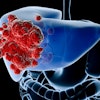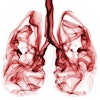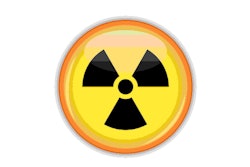
A nationwide study covering millions of youths in South Korea has substantiated concerns over the health risks of radiation exposure from diagnostic imaging -- linking it to an increased incidence of cancer. The findings are the subject of an article published online September 4 in JAMA Network Open.
The trend toward an increasing use of CT and other medical imaging exams that emit low doses of radiation has prompted unease among some healthcare providers and the general public. The possibility of the carcinogenic effect of radiation to be more potent in different subsets of people could have important clinical implications for the standards of radiation protection, according to first author Dr. Jae-Young Hong, PhD, and colleagues from Korea University.
For the large-scale study, Hong and colleagues determined cancer incidence among 12,068,821 South Korean individuals age 19 and younger. They sourced the data from the South Korean National Health Insurance System claim records from January 2006 to December 2015.
Approximately 10.6% of the cohort (roughly 1.3 million individuals) had undergone a diagnostic imaging exam that exposed them to radiation -- including CT, bone scans, angiography, myocardial perfusion imaging, and PET, among others -- two or more years before a diagnosis of cancer. The incidence of cancer among these individuals was 0.11%.
Overall, the researchers found there was a significantly greater cancer incidence among individuals who were exposed to radiation than in those who were not exposed, after adjusting for various parameters including age and sex (p < 0.001).
The association between medical radiation exposure and increased cancer incidence applied to distinct cancer types as well, with myelodysplasia, breast, and thyroid cancer having the highest incidence rate ratios.
| Association between medical imaging radiation exposure and cancer risk | |
| Incidence rate ratio after radiation exposure | |
| Myelodysplasia | 2.48 |
| Breast cancer | 2.32 |
| Thyroid cancer | 2.19 |
| All cancers | 1.64 |
The incidence of certain types of cancer also turned out to be higher for those who underwent CT, compared with other diagnostic imaging exams. In the case of respiratory cancer, the incidence rate ratio was 5.68 for those who underwent chest CT but only 1.95 for all the diagnostic exams.
Furthermore, cancer incidence increased by a statistically significant degree with more instances of radiation exposure. For example, individuals who received more than three CT scans and underwent the exams at least five years before cancer diagnosis had a 2.9-fold increase in cancer incidence, compared with the control. The difference in cancer incidence rates increased to nine-fold if they underwent the CT scans one year or more before diagnosis.
Despite these findings, the authors cautioned against overreacting to the dangers of CT radiation exposure, given the study's lack of clinical information regarding the reasons for which the individuals underwent medical evaluation in the first place.
"We cannot assume that all of the excess cancers observed during the follow-up period were associated with low-dose ionizing radiation, as scanning decisions were based on medical indications. ... Therefore, we cannot rule out the possibility of reverse causation, in which the early symptoms of cancer prompted exposure to diagnostic low-dose radiation," they wrote.
In addition, prior risk analyses conducted in the U.S. reported that the lifetime risk of cancer from a head CT scan, for example, is approximately one in 1,000 to 2,000 scans -- considerably lower than the estimated lifetime cancer risk of roughly 33% in the general population.
The results nevertheless do underscore the importance of the appropriate use of radiation-based medical imaging exams and may inform clinical decision-making regarding their application, particularly for Asian youth populations, Hong and colleagues noted.
"The associations we found ... suggest that there is incentive to limit radiation doses to as low as reasonably achievable and to only scan when justified," they wrote. "Medical professionals should weigh the benefits of diagnostic low-dose ionizing radiation with the associated risks to justify each decision."


















